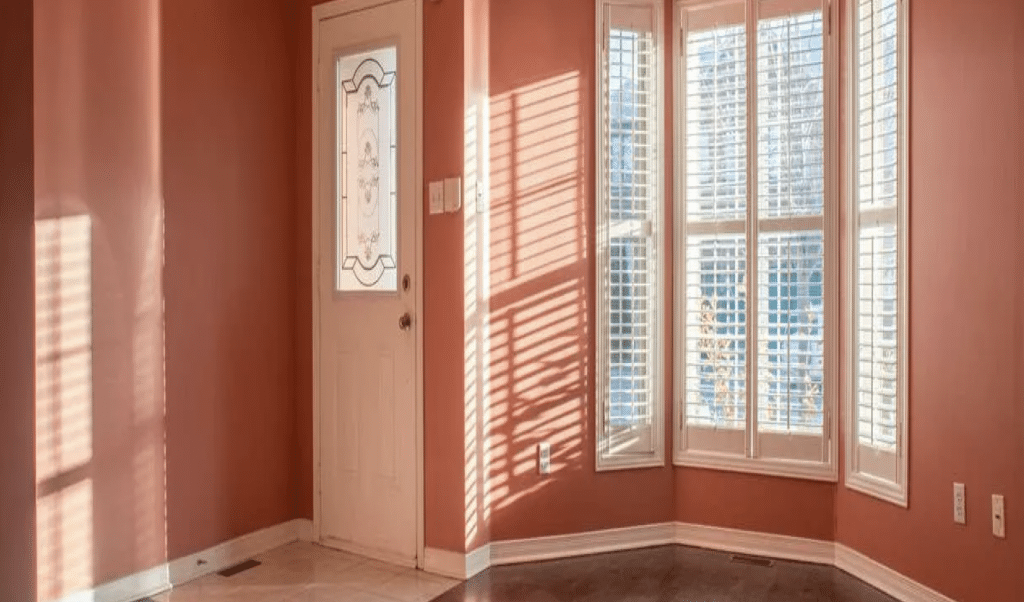Installing replacement windows and doors involves careful demolition and installation work around existing finishes and furnishings. Preparation of your interior spaces streamlines the process and prevents issues.
Adequate preparation minimizes disruptions, damage, and delays while protecting your belongings. Let’s review critical tips for getting your home ready before the crew arrives to start the replacement of windows and doors Oakville.
1. Clear Access To Window Locations
Remove furniture and other items immediately in front of windows to allow installers ample workspace. Clearing at least 3 feet out from each window provides room for equipment, tools, materials, and foot traffic.
For second-story windows, mounting ladders and moving large window units through the interior requires keeping stairways and hallways clear. Facilitating easy access to every window location speeds the installation process.
2. Protect Surrounding Surfaces
Cover nearby floors, countertops, and furniture with drop cloths or plastic sheeting to guard against dust and debris during windows and doors demolition and installation. Use painter’s tape to mask adjacent walls and trim work.
Staging supplies like caulk and sealants need stable surfaces, so keep countertops accessible. Remove art, decor items, and valuables from installation zones to prevent accidental damage. Mark irremovable fixtures like chandeliers.
3. Remove Window Treatments
Take down all window treatments like curtains, blinds, and hardware within 3-4 feet of each window. This keeps soft goods from being damaged by dust and debris. It also allows installers unimpeded access to window openings.
Label each window treatment with painter’s tape indicating the corresponding window for simplified rehanging. Timely reinstallation of treatments completes the new window aesthetics after installers finish their work.
4. Rearrange Living Spaces
Plan to rearrange furnishings and activities away from installation areas. For example, move to seat away from patio doors and consider relocating bedrooms or dining spaces to alternate rooms if the work impacts their standard windows significantly.
Temporary room rearrangements maintain functionality and livability in your home during the window project. Adjusting living patterns around the installation work helps life go on more comfortably.
5. Schedule For Minimal Disruption
Coordinate schedules to have the most disruptive installation phases occur when you can be away at work or alternate activities. For example, plan for the noisiest demolition work when the home is unoccupied to reduce annoyance.
If possible, arrange an overnight hotel stay during the height of intensive installations like removing large sliding glass doors. Planning around work activities minimizes major disruptions to normal home life.
6. Control Pets
Keep pets away from the installation crew and block their access to hazards like chemicals, tools, debris, or unsecured openings. Shut dogs in protected rooms with food, water, and litter boxes. Board pets if necessary.
Post signs indicating pet locations so installers avoid surprising encounters. Pick up food and water dishes from installation zones. Pets underfoot can impede progress and risk injury around power tools and construction materials.
7. Secure Valuables
Lock away jewelry, cash, small electronics, personal documents, and other valuables to protect them during periods installers will be working in your home. While reputable firms check credentials and don’t expect issues, added precautions are wise.
For peace of mind, lock interior doors securing bedrooms and studies during work hours. Home security systems and outdoor cameras also deter problems. But the priority is limiting accessible valuables.
8. Clear Garages And Driveways
Installation crews need space to park trucks and trailers near home entrances for efficient unloading and staging of new windows and doors. Remove vehicles from driveways and organize clutter in garages to facilitate access.
Available off-street parking also allows installers’ vehicles to remain out of neighbors’ way on crowded residential streets. Identify parking areas, entry points, and pathways installers should use.
9. Clean Around Window Openings
Use a vacuum with a brush attachment to clear existing window frames and sills of dust, dirt, and debris. Clean surrounding walls, baseboards, window stool areas, and window tracks too. Remove all blinds and window treatments for thorough access.
Thorough cleaning of windows and doors Oakville simplifies preparations like sanding or painting once the new windows or doors are installed.
Staying flexible around work schedules also helps minimize disruptions. With some preparation, your window installation process will continue efficiently from start to finish. The improvements will enhance your home for years to come.
